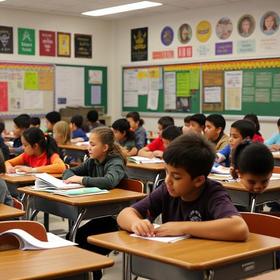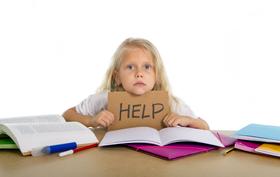Schools nationwide require resources to operate, and that typically boils down to money. The way in which schools get their funding varies from state to state and district to district. However, there are a few basic funding principles that are relatively uniform throughout the country. With funding coming from a variety of resources, and allocation determined in various ways, it is helpful to understand the basics of funding public schools to discover where these important institutions get the resources they need to educate students across America.
Where does the Money Come From?
According to Education Week, public school funding comes from a variety of sources at the local, state and federal level. Approximately 48 percent of a school’s budget comes from state resources, including income taxes, sales tax, and fees. Another 44 percent is contributed locally, primarily through the property taxes of homeowners in the area. The last eight percent of the public education budget comes from federal sources, with an emphasis on grants for specific programs and services for students that need them.
This TEDTalk discusses the funding of public schools.
The website for the U.S. Department of Education explains that during the 2004-2005 school year, about 83 cents from every dollar spent on education came from state and local sources. Around eight percent is contributed by the federal government, and another eight or nine percent might come from private entities. The careful distribution of funding is according to a traditional American desire to keep control of the schools at the local level, rather than a national one. According to the U.S. Constitution, governance of schools is the responsibility of individual states that are best equipped to recognize and meet the needs of the students in that state.
More about Federal School Funding
The large majority of federal funding set aside for public education is distributed directly to local schools. The federal government does not have the authority to set unfunded mandates for local schools, which means schools and districts can always refuse federal money offered if the state government does not wish to participate in the program those dollars are allotted to fund. Some of the programs currently funded by the federal government include:
- Title I – A program specifically geared to students from low-income families and areas, which provides money to local districts to improve academic performance of those students.
- English Language Acquisition – Offers money to schools with students that do not speak English as a first language, to help them learn English and improve proficiency on statewide examinations.
- Reading First – Provides federal money to help schools implement robust reading programs that utilize scientific-based research to support their success.
- Individuals with Disabilities Education Act – Allots money to schools to help students with disabilities get a quality education in the public school system, by providing them with the resources they need to succeed.
- Improving Teacher Quality Grants – Offers money for teacher training and development programs within local schools and districts.
Where Local Funding Comes From
Each state has its own formula for how funding for schools is collected and allotted. In most states, local property taxes make up the majority of funding. However, Great Education Colorado reports on its website that due to falling property tax revenues in Colorado in recent year, this is one state that has had to make up some of the difference through additional state funding. Unfortunately, the recent economic recession has led to smaller state budgets as well, which has left many states and school districts without enough funding to go around.
Today, states like Colorado are taking advantage of the economic uptick to try to put some money back into public education. However, the process is slow, with slight increases annually that are not yet having much positive impact on school budgets overall. Since schools must provide the basics, including heat, electricity and transportation, cuts that must be done are frequently taken from the classroom. This means fewer programs for students and larger class sizes that can create obstacles to student success.
This video from the Harvard Graduate School of Education asks if public school funding is fair.
How is Money Spent?
The allocation of funding also varies from state to state. For example, according to the Intercultural Development Research Association, policymakers determine how much funding schools will receive and how it should be allocated, while school boards and personnel make many of the budget decisions in Texas schools. In turn, members of the community have a say in the funding of public education, through their votes for those policymakers.
Education Week refers to the allocation of resources according to adequacy and equity. In other words, states have a responsibility to make sure schools have sufficient funding to operate, and schools have a responsibility to ensure every student gets a quality education. In most cases, funding is divided by student, with funding ranging from just over $3,000 per student in Utah to more than $11,000 per student in New York. States may also allocate funding based on specific programs, in some cases using federal money for programs that are implemented at the federal level.
This video explores the inequality of public school funding.
It is difficult for states to estimate how much it will cost to educate a student. No matter what type of research is used to determine the amount, every methodology is flawed to some extent. Researchers may also disagree on what an “adequate” education looks like. Finally, it is difficult to take into consideration the cost to educate every student in a single average, since some students may have special needs or require more services.
Questions? Contact us on Facebook. @publicschoolreview











